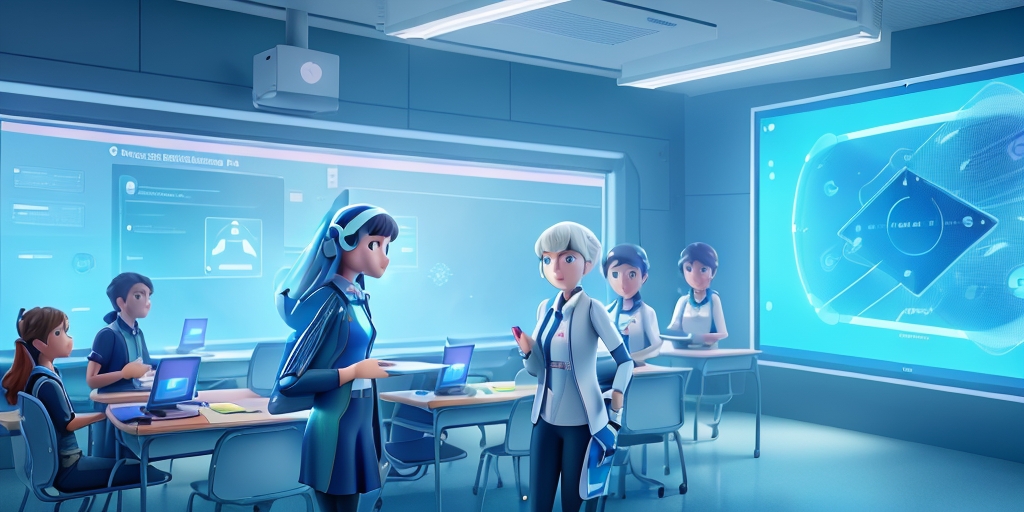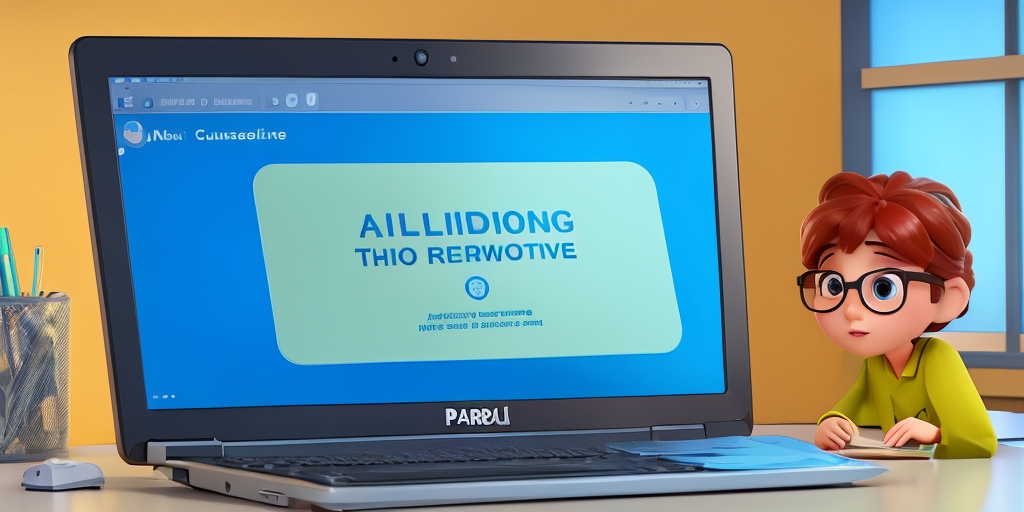AI Paraphrasing: Achieving Originality While Enhancing Efficiency
I am a creative and analytical person who enjoys problem-solving and finding creative solutions. I am driven by curiosity and a passion for learning, and take initiative to explore and understand new concepts. I am a great communicator and collaborate well with others, and am always looking for opportunities to improve myself and my team.
AI Paraphrasing: Achieving Originality While Enhancing Efficiency
Understanding the Controversy

AI paraphrasing tools are becoming more popular due to their ability to quickly and efficiently rephrase text. These tools can be a great asset, especially when you're dealing with large amounts of information or tight deadlines. However, their growing use has sparked a debate about plagiarism.
- Are these tools simply providing assistance, or are they enabling cheating?
- Is it ethical to use AI-generated content without giving credit to the tool?
- Does the use of these tools diminish the value of original writing?
These are just a few of the questions that have been raised in this ongoing discussion. The answers are not always clear-cut and can depend on various factors, including the context in which the tool is used and the intent of the user.
The Fine Line Between Assistance and Cheating
AI paraphrasing tools, like any other technology, can be used in beneficial ways. They can help writers overcome writer's block, assist in translating complex texts, and even aid in learning new languages. However, the line between assistance and cheating can become blurred when these tools are used to generate content that is then passed off as one's own original work.
Plagiarism, in its simplest form, is the act of using someone else's work without giving them credit. When you use an AI tool to paraphrase a text and then present it as your own, you are essentially plagiarizing from the original source. This is because the ideas and information in the text are not your own, even if the words used to express them are different.
So, is using an AI paraphrasing tool always considered plagiarism? Not necessarily. The key lies in how you use the tool and the intent behind it. But how can we distinguish between ethical use and cheating? And what role does intent play in this? Stay tuned as we delve deeper into these questions in the next section.
Is AI Paraphrasing Considered Cheating?

As AI paraphrasing tools become more prevalent, a question arises: Is using these tools considered cheating? The answer isn't as straightforward as you might think. It's a topic that has sparked heated debates among educators, students, and professionals alike. Let's dive into the different perspectives on this issue.
The Role of Intent
When it comes to using AI paraphrasing tools, intent plays a crucial role. If you're using these tools to simply rephrase your own ideas or to better understand complex text, it's generally seen as a legitimate use. However, if you're using these tools to disguise someone else's work as your own, that's where it crosses the line into cheating.
Consider this quote from Albert Einstein: "The secret to creativity is knowing how to hide your sources." While this quote is often used humorously, it does highlight the importance of originality and the ethical use of sources. When using AI paraphrasing tools, it's essential to keep this in mind.
The AI Perspective
AI companies like Jasper AI, Copy AI, and Hypotenuse AI have their own views on this issue. They argue that their tools are designed to assist users in creating content, not to enable cheating. Here's what they have to say:
- Jasper AI: "Our tool is designed to help users generate unique content. It's not intended to be used for plagiarism."
- Copy AI: "We believe in the power of AI to enhance creativity, not to replace it. Our tool should be used responsibly."
- Hypotenuse AI: "Our AI is a tool, not a shortcut. It's up to the user to use it ethically."
These companies emphasize that their tools should be used as aids for creativity and understanding, not as a means to plagiarize. However, the responsibility ultimately falls on the user to use these tools ethically.
So, is using AI paraphrasing tools considered cheating? It depends on how you use them. But what about detection? Can AI paraphrasing be detected? Stay tuned as we delve into this topic in the next section.
Can AI Paraphrasing Be Detected?
As AI paraphrasing tools become more prevalent, a question that naturally arises is whether these tools can be detected. Can a piece of text that has been paraphrased by an AI be distinguished from one written by a human? The answer is yes, and the technology that makes this possible is fascinating.
The Power of Algorithms
There is a tool available today that can detect AI paraphrased content. The most notable one is Originality.AI. This tools use complex algorithms to analyze text and identify patterns that are characteristic of AI-generated content.
- Originality.AI uses machine learning to compare a document against a database of known AI-generated content. It looks for specific patterns and structures that are common in AI paraphrased text.
As the famous computer scientist Donald Knuth once said, "An algorithm must be seen to be believed." These tools are a testament to the power of algorithms in our digital age.
The Accuracy of Detection
But how accurate are these detection tools? Studies have shown that they are quite effective. For instance, a study by Originality.AI found that their tool could accurately detect AI paraphrased content 94% of the time. However, it's important to note that no tool is 100% accurate. There will always be a margin of error, and the technology is continually evolving.
What does this mean for users of AI paraphrasing tools? It means that while these tools can be helpful, they should be used responsibly. If you're using an AI tool to paraphrase content, you should always make sure to add your own insights and ideas to the text. This not only ensures that your work is original, but it also makes it less likely to be flagged by detection tools.
Now that we know AI paraphrasing can be detected, the question remains: how can we use these tools without plagiarizing? Stay tuned as we delve into this topic in the next section.
How to Use AI Without Plagiarizing?

Now that we've explored the controversy surrounding AI paraphrasing and plagiarism, let's delve into how you can use these tools ethically. It's not about avoiding the use of AI; it's about using it responsibly. As Albert Einstein once said, "The measure of intelligence is the ability to change." So, let's adapt to this new technology without compromising our integrity.
Steps to Ethical Paraphrasing
Paraphrasing with AI doesn't have to be a minefield. Here are some steps to ensure you're using these tools ethically:
- Read and Re-read: Understand the original text thoroughly before using an AI tool. This ensures you grasp the core ideas and can present them in your own words.
- Break Down the Text: Break the original text into smaller sections. This makes it easier to understand and paraphrase.
- Use Your Own Words: AI tools should assist, not dictate your writing. Use them to get ideas, but express these ideas in your own unique style.
- Run a Plagiarism Checker: After paraphrasing, run your text through a plagiarism checker. This ensures your content is original and not too similar to the source material.
Remember, the goal is to use AI as a tool to enhance your writing, not to replace your unique voice and perspective.
The Role of Synonyms and Idea Flow
When paraphrasing, it's easy to fall into the trap of simply swapping words with synonyms. However, ethical paraphrasing goes beyond this. It's about understanding the idea flow and presenting it in a new, unique way. AI tools can suggest synonyms, but it's up to you to ensure the content makes sense and maintains the original idea's integrity.
For instance, if the original text says, "The cat chased the mouse," a simple synonym swap might give you, "The feline pursued the rodent." While technically correct, it sounds unnatural and forced. A better paraphrase might be, "The mouse found itself in a high-speed chase with a determined cat."
See the difference? It's the same idea, but presented in a fresh, engaging way. That's the power of ethical paraphrasing.
So, are you ready to use AI paraphrasing tools responsibly? Great! But what does the future hold for these tools? Will they become more sophisticated, making plagiarism detection even harder? Or will they evolve to promote ethical use? Let's explore this in the next section.
The Future of AI Paraphrasing

As we delve deeper into the digital age, the evolution of AI paraphrasing tools is inevitable. But what does this mean for users and plagiarism detection? Let's explore.
The Evolution of AI Tools
AI paraphrasing tools are becoming more sophisticated by the day. They're not just about replacing words with synonyms anymore. These tools are now capable of understanding context, maintaining the tone of the original text, and even generating new, unique content. A study by Stanford University reveals that advanced AI models like GPT-3 can generate human-like text that's almost indistinguishable from content written by people.
But as these tools evolve, so do the challenges. The line between assistance and plagiarism becomes blurrier. The more advanced these tools become, the harder it is to detect whether a piece of content has been AI-paraphrased or not. This brings us to the question - how can we adapt to this rapidly changing landscape?
The Role of Education
Education plays a crucial role in addressing this issue. It's not just about teaching users how to use these tools ethically, but also about raising awareness of the potential consequences of plagiarism.
For instance, universities could incorporate lessons on ethical AI use in their curriculum. They could teach students how to use AI tools to assist their research and writing, without crossing the line into plagiarism. Online platforms that offer AI paraphrasing tools could also provide guidelines and best practices for ethical use.
Moreover, education isn't just about prevention. It's also about innovation. As AI tools evolve, so should our methods of detecting AI-paraphrased content. Researchers and developers should continue to innovate and improve plagiarism detection tools to keep up with the advancements in AI technology.
So, what does the future hold for AI paraphrasing? Will we be able to strike a balance between leveraging AI technology and maintaining originality in our work? The answer lies in the final part of this article. Stay tuned!
Wrapping Up
As we reach the end of this exploration, it's clear that the relationship between AI paraphrasing tools and plagiarism is a complex one. The key takeaway is that these tools, while incredibly useful, must be used responsibly to avoid crossing the line into plagiarism.
The Balance Between AI and Originality
AI paraphrasing tools can be a great asset in generating fresh content, but it's crucial to remember the importance of originality. Using AI tools ethically means not just changing a few words or sentences, but truly understanding and rephrasing the content in your own unique voice. This balance between leveraging AI and maintaining originality is what will set your work apart.
For instance, if you're using an AI tool to paraphrase a research study, don't just replace words with synonyms. Instead, read the study thoroughly, understand its key points, and then use your own words to explain these points. This way, you're not just regurgitating the same information, but adding your own unique perspective and understanding to it.
Conclusion: Navigating the AI Paraphrasing Landscape
As AI continues to evolve, so too will the landscape of AI paraphrasing. It's an exciting time, but also one that requires awareness and understanding. The key is to use these tools as aids, not crutches. They should enhance your work, not replace it.
Remember, the goal isn't to fool plagiarism detectors, but to create high-quality, original content. As long as you keep this in mind, you'll be able to navigate the AI paraphrasing landscape effectively and ethically.
Finally, it's worth noting that education plays a crucial role in this. As users, we need to stay informed about the ethical use of AI tools and the potential consequences of plagiarism. This way, we can make the most of these tools while still respecting the principles of originality and intellectual property.



.jpg)
.jpg_nowm_640.jpg)

.jpg)
.jpg_nowm_1260.jpg)